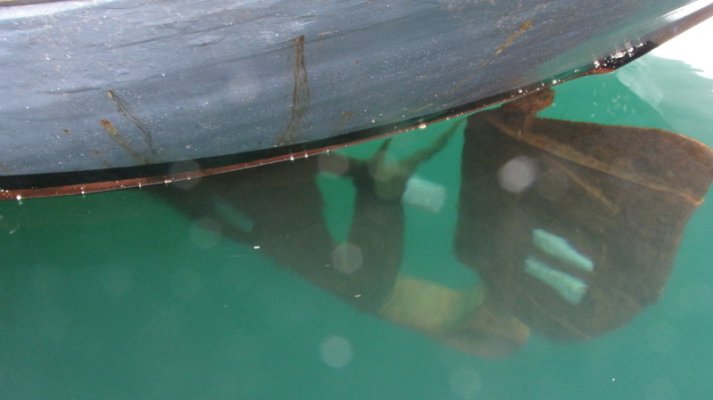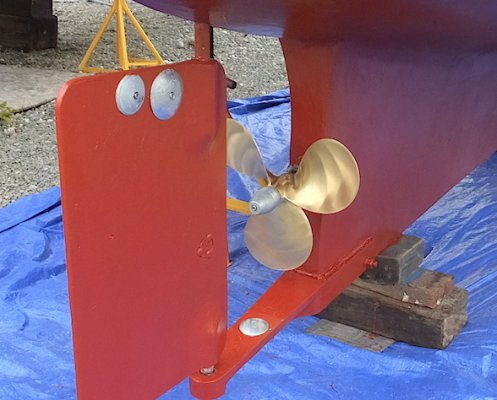AKDoug
Guru
Hello all,
I am wondering if the metallurgy in a propeller changes with age, requiring it to be replaced at some point due to loss of "something" in the alloy? I am still spinning the original prop and it has no issues, but I read somewhere that as the prop "pinks" up that the metallurgy was changing. Just wondering...
Also, after reading through the anode threads that come and go, I wondered if there were any other Willard owners who do not have an anode on their prop shaft? Mine does not, has no issues, and the aluminum anodes on each side of the keel show pretty normal wear and tear.
There isn't adequate space on the shaft for an anode to fit between the cutlass bearing and the prop, the space between being less than the diameter of the prop shaft. The two zinc anodes (original) were replaced when I had the bottom barrier coated and re-painted and I replaced them with aluminum anodes.
PS just had an article on zinc vs aluminum and the aluminum was superior in every respect except marine growth on the anodes. That's not an issue up here with seasonal haul outs and the cold water, the bottom just accumulates a little "slime" instead of growth unless you leave it in the harbor tied to the dock. Then you grow hay on the sunny side of the hull.
I used high copper Trinidad SR, and there was no sign of incompatibility with the aluminum anodes even in close proximity to the anodes. Turns out the SR is probably not my best choice with seasonal haul outs... Live and learn.
Just wondering Inquiring minds want to know!
Inquiring minds want to know!
I am wondering if the metallurgy in a propeller changes with age, requiring it to be replaced at some point due to loss of "something" in the alloy? I am still spinning the original prop and it has no issues, but I read somewhere that as the prop "pinks" up that the metallurgy was changing. Just wondering...
Also, after reading through the anode threads that come and go, I wondered if there were any other Willard owners who do not have an anode on their prop shaft? Mine does not, has no issues, and the aluminum anodes on each side of the keel show pretty normal wear and tear.
There isn't adequate space on the shaft for an anode to fit between the cutlass bearing and the prop, the space between being less than the diameter of the prop shaft. The two zinc anodes (original) were replaced when I had the bottom barrier coated and re-painted and I replaced them with aluminum anodes.
PS just had an article on zinc vs aluminum and the aluminum was superior in every respect except marine growth on the anodes. That's not an issue up here with seasonal haul outs and the cold water, the bottom just accumulates a little "slime" instead of growth unless you leave it in the harbor tied to the dock. Then you grow hay on the sunny side of the hull.
I used high copper Trinidad SR, and there was no sign of incompatibility with the aluminum anodes even in close proximity to the anodes. Turns out the SR is probably not my best choice with seasonal haul outs... Live and learn.
Just wondering


